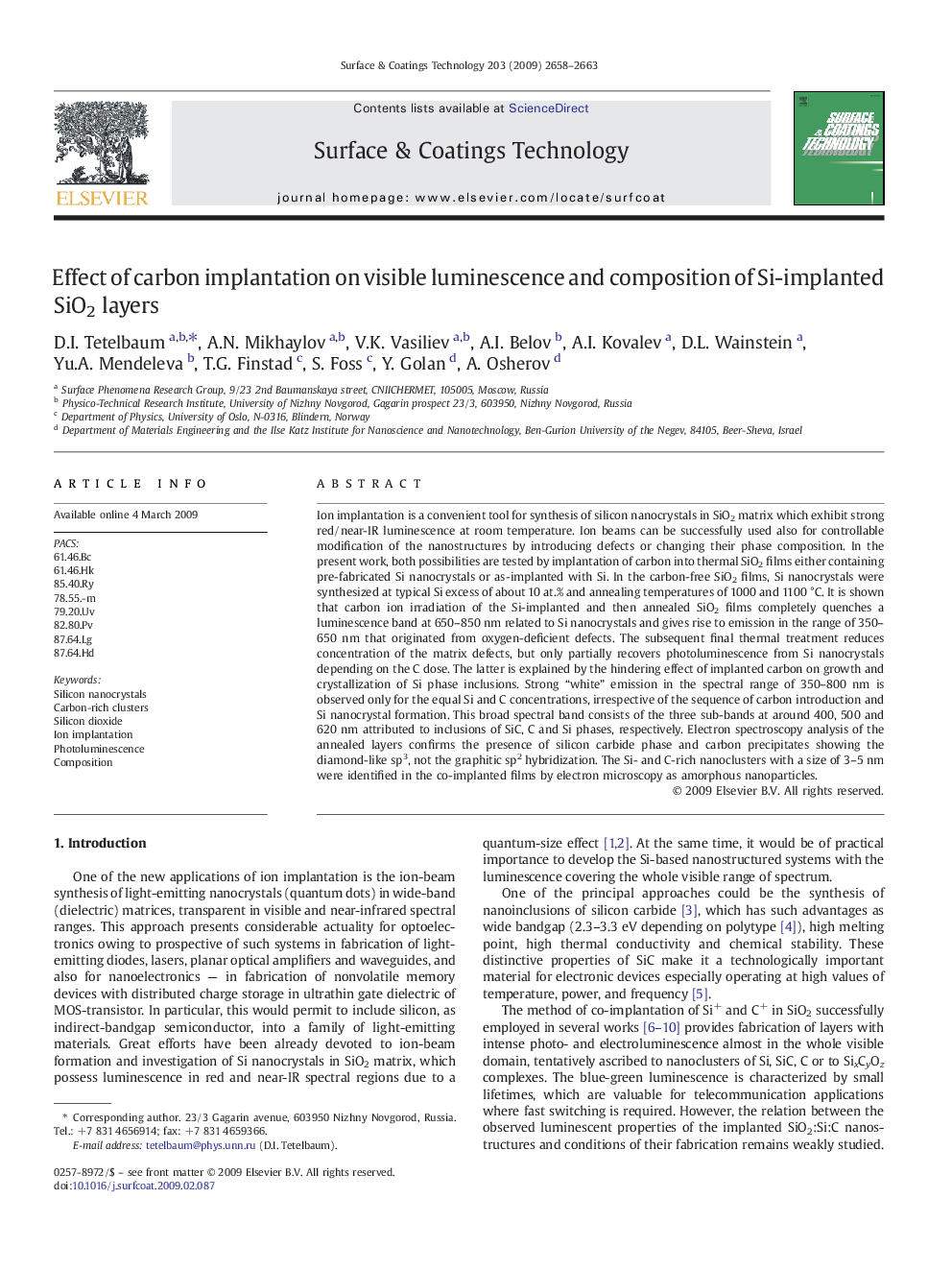| Article ID | Journal | Published Year | Pages | File Type |
|---|---|---|---|---|
| 1660200 | Surface and Coatings Technology | 2009 | 6 Pages |
Abstract
Ion implantation is a convenient tool for synthesis of silicon nanocrystals in SiO2 matrix which exhibit strong red/near-IR luminescence at room temperature. Ion beams can be successfully used also for controllable modification of the nanostructures by introducing defects or changing their phase composition. In the present work, both possibilities are tested by implantation of carbon into thermal SiO2 films either containing pre-fabricated Si nanocrystals or as-implanted with Si. In the carbon-free SiO2 films, Si nanocrystals were synthesized at typical Si excess of about 10 at.% and annealing temperatures of 1000 and 1100 °C. It is shown that carbon ion irradiation of the Si-implanted and then annealed SiO2 films completely quenches a luminescence band at 650-850 nm related to Si nanocrystals and gives rise to emission in the range of 350-650 nm that originated from oxygen-deficient defects. The subsequent final thermal treatment reduces concentration of the matrix defects, but only partially recovers photoluminescence from Si nanocrystals depending on the C dose. The latter is explained by the hindering effect of implanted carbon on growth and crystallization of Si phase inclusions. Strong “white” emission in the spectral range of 350-800 nm is observed only for the equal Si and C concentrations, irrespective of the sequence of carbon introduction and Si nanocrystal formation. This broad spectral band consists of the three sub-bands at around 400, 500 and 620 nm attributed to inclusions of SiC, C and Si phases, respectively. Electron spectroscopy analysis of the annealed layers confirms the presence of silicon carbide phase and carbon precipitates showing the diamond-like sp3, not the graphitic sp2 hybridization. The Si- and C-rich nanoclusters with a size of 3-5 nm were identified in the co-implanted films by electron microscopy as amorphous nanoparticles.
Keywords
Related Topics
Physical Sciences and Engineering
Materials Science
Nanotechnology
Authors
D.I. Tetelbaum, A.N. Mikhaylov, V.K. Vasiliev, A.I. Belov, A.I. Kovalev, D.L. Wainstein, Yu.A. Mendeleva, T.G. Finstad, S. Foss, Y. Golan, A. Osherov,
